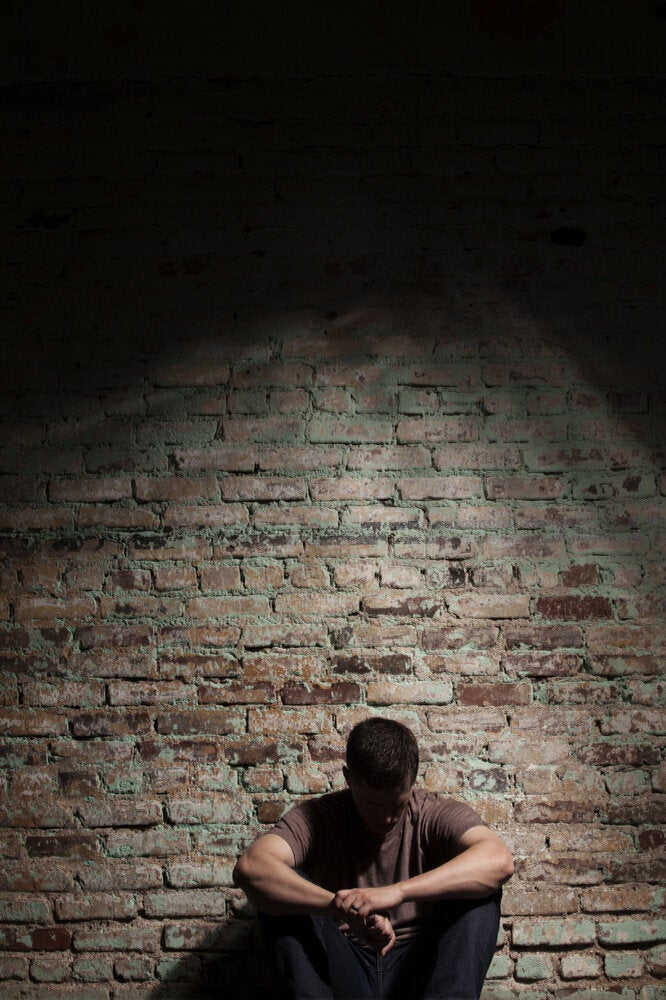
"It happened during the holidays, just a few days before Christmas."
Grand Chief Alvin Fiddler of the Nishnawbe Aski Nation in northern Ontario is recounting a recent tragedy, a type of story he's had far too much experience retelling.
"The current system, as it is now, it's not working. It's unable to meet the needs of our families and communities," he says in a voice flecked with anger and sadness.
"We have 10-year-old kids taking their lives. Something is terribly wrong."
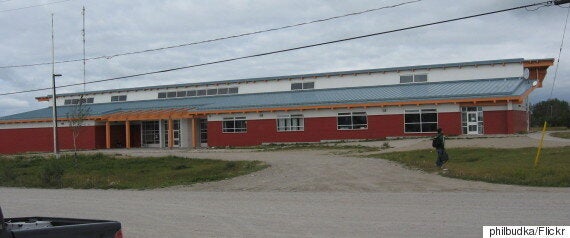
The Michikan Lake School on the Bearskin Lake First Nation. (Photo: Philipp Budka/Flickr)
Bearskin Lake is a remote Oji-Cree First Nations community of 472 on-reserve residents, more than 2,000 kilometres northwest of Toronto. It is an alcohol-free community of three settlements, accessible only by air, except for a few months when the winter road crosses Windigo Lake north through to Muskrat Dam.
It was here where a 10-year-old girl killed herself during the holidays, the youngest in a cluster of five youth suicides in the territory since December.
"She has siblings. She has classmates," says Fiddler. "We wanted to make sure there were [mental health] supports in place for all the kids coming back to school and for the most part, I think we did."
After the Christmas break, crisis counsellors were sent to provide mental health support for the families and 100 or so students.
"The Ministry of Children and Youth Services has been in contact with the Chief and Band Council and has been in touch with the community to arrange for additional services and supports," says Aly Vitunski, a provincial spokesman. "Our thoughts are with the families of Bearskin Lake First Nation during this difficult time... as we share the concerns of Indigenous leaders about the high rate of suicide among Indigenous youth."
While appreciative for the assistance, Fiddler says they were "trying to put out these fires" until their resources were required elsewhere.
"Different agencies try to do different things to support the community but what the community is asking for is a longer-term presence," he says.
"There has to be comprehensive [strategy] in place, especially when you have a suicide victim that young. They're still children, and the impact that it has on the other kids, that is something that the community is dealing with right now."
Right now, but also again.
"There's another 10-year-old that took his life last year in May or June, early summer, in one of the other communities near Bearskin Lake."
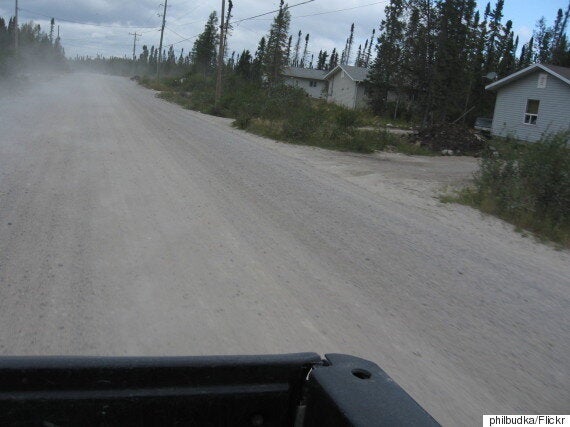
A dusty road in Bearskin Lake. (Photo: Philipp Budka/Flickr)
Kids' suicide rate is 50 times the national average
Nishnawbe Aski Nation (NAN) is a confederation of 49 First Nations across Northern Ontario, 32 of which are only accessible by air except for a winter road that is passable from January to March. The rest of the year they are cut off.
The suicide rate for children under 15 in this territory is 50 times the national average. One recent death was of a 14-year-old girl from the Neskantaga First Nation — which had declared a state of emergency in 2013 after seven youth took their own lives. The area saw 27 suicide attempts that year.
There was a similar wave of suicides in the Mushkegowuk region in 2010 that prompted another state of emergency. It also inspired "The People’s Inquiry Into Our Suicide Pandemic" — so named because they were unable to get government funding — that was presented at the NAN Winter Chiefs Assembly last month.
Though the report focused on nine communities along the James Bay coast, including Moosonee, Moose Factory and Attawapiskat, the solutions and recommendations apply across the board. The process included a youth gathering where kids discussed the issues that affected them the most, such as:
- Substance abuse
- Bullying
- Sexual abuse
- Lack of awareness about mental health support.
The main inquiry also looked at the impact of residential schools, parenting skills, family violence and unresolved grief.
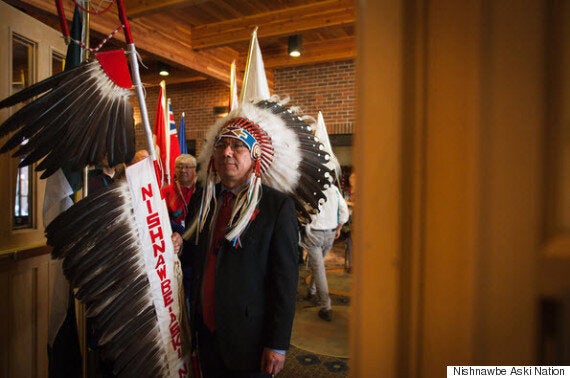
Grand Chief Alvin Fiddler of the Nishnawbe Aski Nation took part in the NAN Winter Chiefs Assembly last month in Thunder Bay, Ont.
In the report's wake, Grand Chief Fiddler called for an emergency task force of senior officials from all levels of government to move beyond the current crisis-oriented approach to fund a short-term emergency response team and develop a long-term strategy for suicide prevention. He suggested that it incorporate mental health services, counselling and addiction treatment.
"For the most part the communities that were talking about are very small, very close-knit. Every time a tragedy like a suicide happens, it affects the whole community, and also the neighbouring communities," he says. "That's why we're saying we need to move away from jumping up and reacting to what's happening."
The Ontario government has earmarked $9.2 million for the Aboriginal-specific component of its provincial mental health and addictions strategy, which includes hiring workers, training staff, and expanding telepsychiatry. Vitunski said the province received a copy of the "People's Inquiry" and the NAN emergency task force resolution and is "currently reviewing the recommendations."
"The number of suicide deaths in children is small, but it isn't zero."
While it is a crisis in northern indigenous communities, the issue of child suicide — or teen suicide related to mental health or trauma that began when they were younger — is actually one that reaches across Canada.
"The number of suicide deaths in children is small, but it isn't zero," explains Mara Grunau, the executive director of the Centre for Suicide Prevention in Calgary. "However, like with most things, children benefit from early intervention so our biggest stress is is to know what to watch for that so you can help them grow stronger and healthier."
The federal government reports that 1.8 in 100,000 children age 10 to 14 died by suicide, a number that rose annually between 2008 and 2012 from 25 to 34.
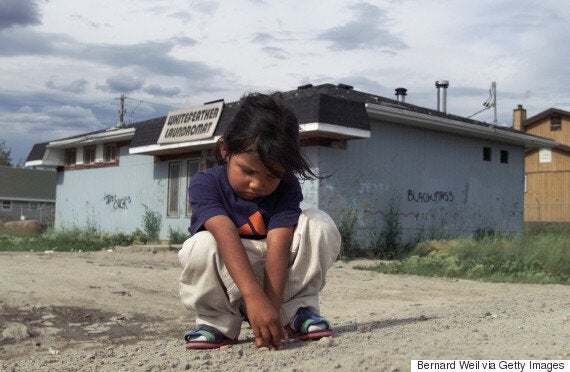
A girl plays by herself on a dusty road in Ontario's Pikangikum First Nations. Located 300 kilometres northwest of Winnipeg, it also has the highest suicide rate in the world. (Photo: Bernard Weil/Toronto Star via Getty Images)
Suicides by Canadian children age 5 to 9 are rare — there were two in 2011. But in the U.S., there were 657 suicides among children aged 5 to 11 between 1993 and 2012. Time magazine also reported that 40 per cent of teens who attempted suicide first tried to kill themselves in elementary or middle school.
Over in the UK, it's being called a "national scandal" that nearly 100 children age 10 to 14 have killed themselves in the past decade, though it may be higher because children under 10 are not included in their statistics.
In the wake of those numbers, a spokesperson for Papyrus, a charity devoted to youth suicide prevention, told the Press Association earlier this month that, "It is painful and toxic to think about it, so we hide it and hope it goes away. Today we can see it is not going away."
Unreliable statistics
Some studies have argued that statistics aren't reliable because many child suicide attempts are unsuccessful and/or are officially reported as accidents since kids rarely leave suicide notes or have access to things like guns or pills.
"That happens constantly. To be honest, that happens at all ages, but it especially happens with children," says Grunau. "When we look at the numbers we know they are always under-reported because the medical examiner is going to err on the side of caution. He would never want to make a mistake, and with children even more so."
Her organization is behind a workshop and handbook, called Tattered Teddies, about the "growing concern" of suicidal behaviour in children under 12. It is designed for frontline workers, such as teachers, coaches, or camp counsellors, to help them spot warning signs and instill coping mechanisms.
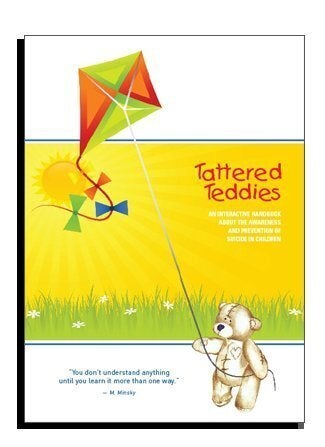
She says one of the biggest dangers is that young children don't necessarily understand that death is permanent. "They might feel unwanted or unloved, or feel like they're a burden to others and that if I just jump out my school window it will fix it for everybody. But they don't get that it's forever."
Adults, meanwhile, often don't grasp that children might consider suicide, much less act on it. The Tattered Teddies workshop raises awareness of the risk, and teaches how to identify warning signs, and how to approach the child and get care for them.
Gruneau says it's a concern "if a child says things like, you'd be better off if I was dead or it would be better if I was dead or I want to go to sleep and not wake up. Children don't make that stuff up."
She adds that parents should be watching out for behavioural changes, like when an outgoing and bubbly child becomes solemn and solitary, and call a local distress line if they're concerned.
'Don't bubble-wrap them'
Gruneau would also like to see a "resiliency-based" school curriculum.
"We don't want our kids to fail, we want to protect them, we want to set them up for success. But protecting them and not allowing them to fail is actually working against them. What we want is for children to be able to experience the real world, and fall down and learn how to pick themselves up," she says. "Don't bubble-wrap them."
That, of course, is less of an issue with remote indigenous populations that have additional stresses and traumas contributing to their higher suicide rate as a result of residential schools, the Sixties Scoop — the practice of removing Aboriginal children from their families and placing them for adoption in non-Indigenous homes — and over-representation in foster care, as well as poverty and isolation.
Different approach for these kids
"The precipitating factors are very different than they are in the general population. They were ravaged [at residential schools] and they go on to have children but they don't know how to parent because they weren't parented," she says. "We're basically seeing the effects of colonization, and it isn't pretty."
As a result, the Calgary group created a workshop called Little Cub with the help of an aboriginal team to address the unique needs.
"The way you approach the children is different. If you're looking at a traumatized community, the supports you would offer are different than if you are a schoolteacher and you're concerned about a child in your Grade 3 class," explains Gruneau.
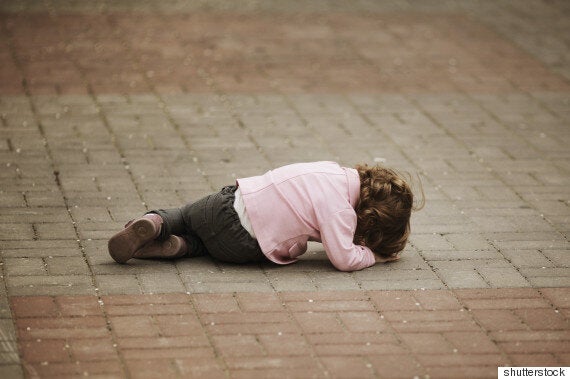
But the constant when it comes to child suicide is that in 90 per cent of cases mental health is involved — usually depression.
"It doesn't discriminate against any age or person or gender. Mental health is something that affects every single person, regardless of where they are in their life," says Caitlin, a counsellor with Kids Help Phone. (The organization uses first names only to protect their confidential and anonymous service.)
But unlike a teen, an eight-year-old may not know where to go or who to turn to, says Caitlin. They need that guidance from a supportive grownup, so adults need to notice that something's wrong before it's too late, something that's as true on a remote reserve as it is in a city or suburb.
"They need to know that everybody has struggle sometimes and that everybody needs help."
"Whether you use that word or not, that's up to you, but we know that talking about suicide is not going to make someone more likely to do it. If anything, it actually helps people to make people feel less alone," Caitlin says. "If they don't want to talk to you, help them identify other people that they can turn to, an older sibling or relative they feel more comfortable talking to."
While places like Nishnawbe Aski Nation wait for a government suicide prevention strategy to be developed and deployed, Caitlin says individuals can focus on teaching coping mechanisms as simple as writing a journal, listening to music, deep breathing exercises, or playing video games to manage stress.
But she adds that one of the most important things is to just tell at-risk children that the feelings they have are normal and can be addressed without resorting to harming themselves.
"They need to know that everybody has struggle sometimes and that everybody needs help."
Young Minds Matter is a new series designed to lead the conversation with children about mental and emotional health, so youngsters feel loved, valued and understood. Launched with Her Royal Highness, the Duchess of Cambridge, as guest editor, we will discuss problems, causes and most importantly solutions to the stigma surrounding the mental health crisis among children.
Read More On Young Minds Matter:
- HRH The Duchess Of Cambridge Blogs On Children's Mental Health
- Shattered Hearts: Explaining Suicide To Children
- Canadian Project Could Change The Future Of Kids' Mental Health
- How Canada Is Failing Kids When It Comes To Mental Health
- Help Your Child Cope With Anxiety
- 5 Signs Your Kids Are Mentally Healthy
- How To Support Your Kids And Really Be There For Them
Also on HuffPost
